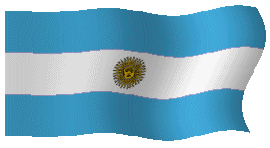
B"H
Jewish  Tours
Tours
 Buenos Aires, Argentina
Buenos Aires, Argentina
In 1773, a Portuguese royal decree finally abolished discrimination against Jews. They slowly filtered back into Brazil. Almost 50 years later, in 1822, Brazil gained independence from Portugal, and a stream of Moroccan Jews began arriving, and set up a synagogue in Belem (northern Brazil) called Porta do Ceu (Gate of Heaven) in 1824 and later one in Manaus (on the Amazon river). By World War I, Belem's Sephardi community of 800 people had its own charitable organizations and a social club.
In the last decade of the 19th century, European Jews began discussing the idea of establishing agricultural settlements in Brazil as an alternative to the unfavorable conditions in Europe. After the 1891 expulsion of the Jews from Moscow, a close associate of Theodor Herzl, Oswald Boxer went to Brazil and returned with a positive report, but plans were abandoned because of Brazilian political strife. The first agricultural settlement was finally established in 1902 by the Jewish Colonization Association (JCA) in the Santa Maria area (southern Brazil). Despite a 1903 pogrom in Bessarabia, only 37 Bessarabian families were willing to settle in the experimental colony, which covered 13,388 acres. The 1904 farming season failed because of inexperience, insufficient funds and poor planning. Although a cooperative headed by an experienced teacher formed in 1907, the settlement continued to produce a fraction of its capability. In 1926, the JCA reported that of the 122 families that settled in the first colony, 17 remained, cultivating corn and beans on only 326 acres. The unused land was then sold.
In 1909, the JCA bought another track of land covering almost 94,000 acres in the Quatro Irmaos area, north of Santa Maria and near a large-scale government development. Despite a more rigorous selection process, the settlers once again failed. Administrative problems, lack of agricultural facilities and the lure of city jobs doomed the settlement. By November 1915, only 72 of the original 232 families remained in the colony. World War I and a civil war, which was partially fought on the colony's land drove out more settlers and by 1926, only 40 people remained. In 1920, the JCA began selling some of the land to non-Jewish settlers. In 1935, after a renewed settlement effort, 104 Jewish families lived in Quaro Irmaos, only to be outnumbered five to one by non-Jewish settlers.
The JCA led a third attempt at agricultural settlement in 1935 because of deteriorating conditions in Germany. However, as part of a strict immigration policy against Jews, the Brazilian government refused to issue the settlers entry visas. The land was later sold.
The settlers who abandoned the colonies set up rich cultural communities in Brazilian cities. By World War I, approximately 7,000 Jews lived in Brazil. In Porto Alegre, capital of the southern state of Rio Grande do Sol, the community opened a Jewish school in 1910 and established a Yiddish newspaper, Di Menshhayt ("Humanity") in 1915. Sao Paolo was home to several philanthropic and cultural associations. In 1916, the Jewish community of Rio de Janeiro formed an aid committee for World War I victims.
|
Visite nuestro sitio/Visit our home page: |